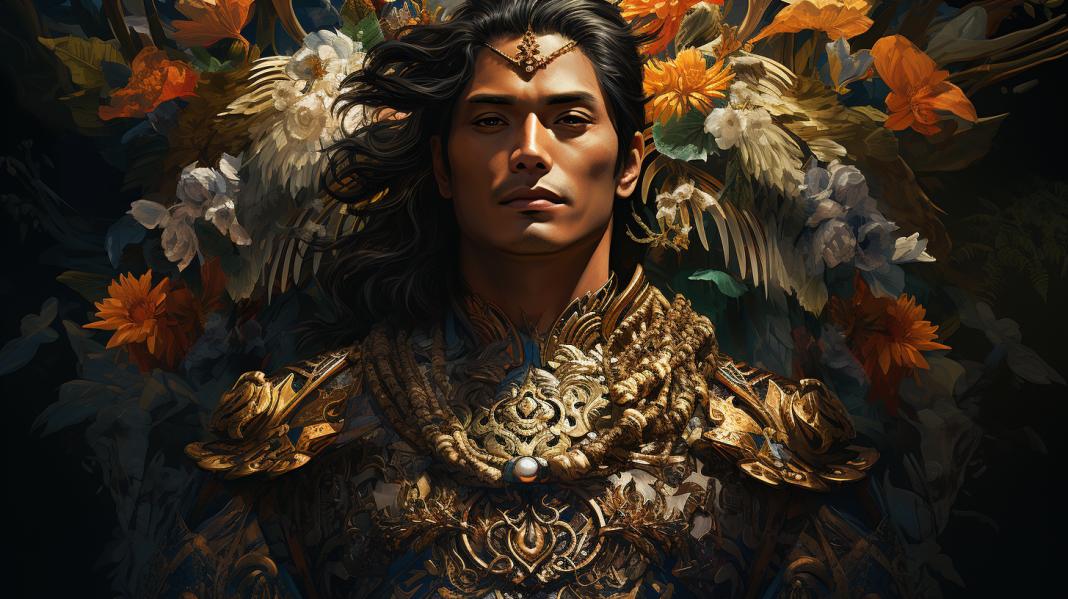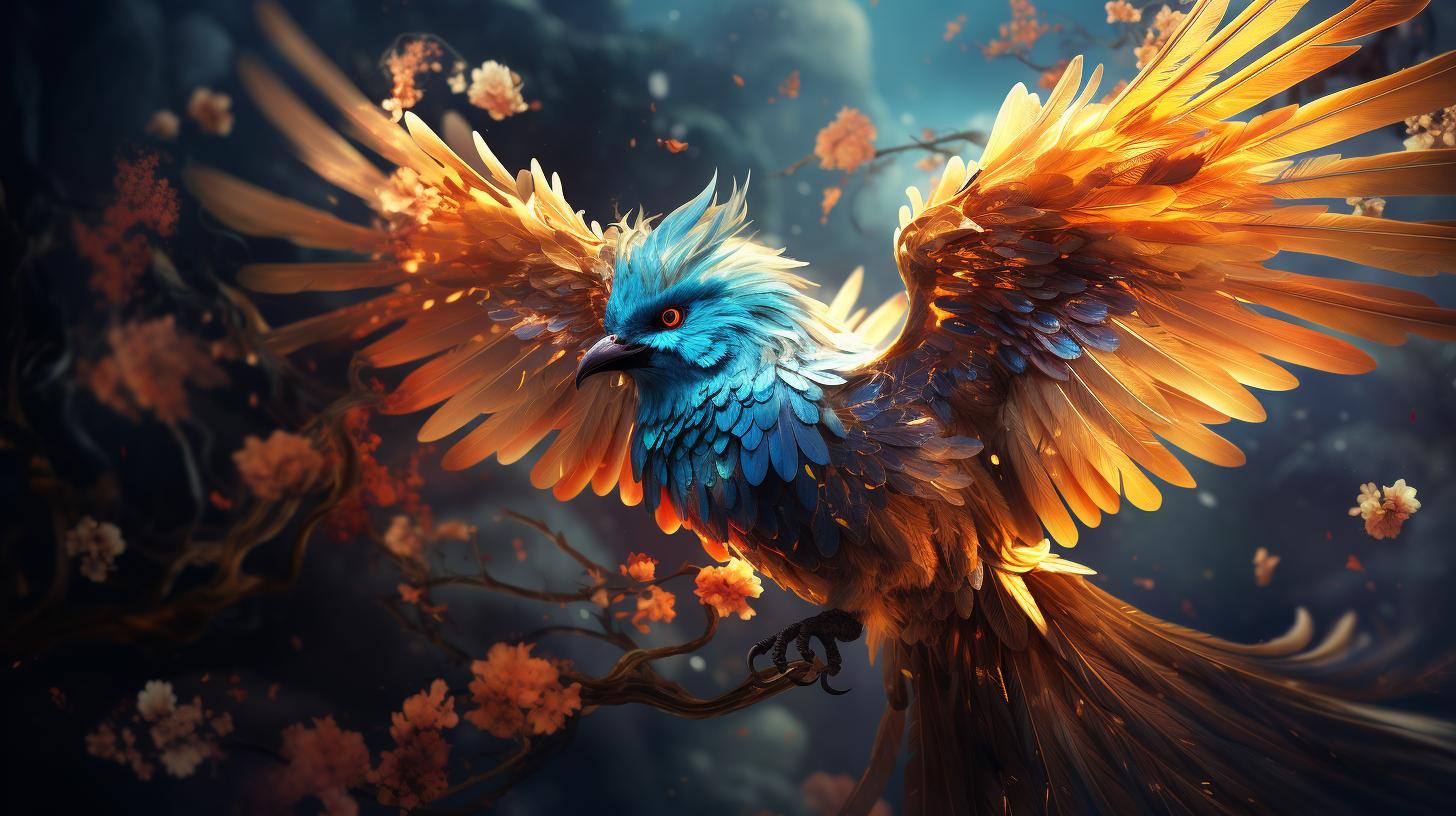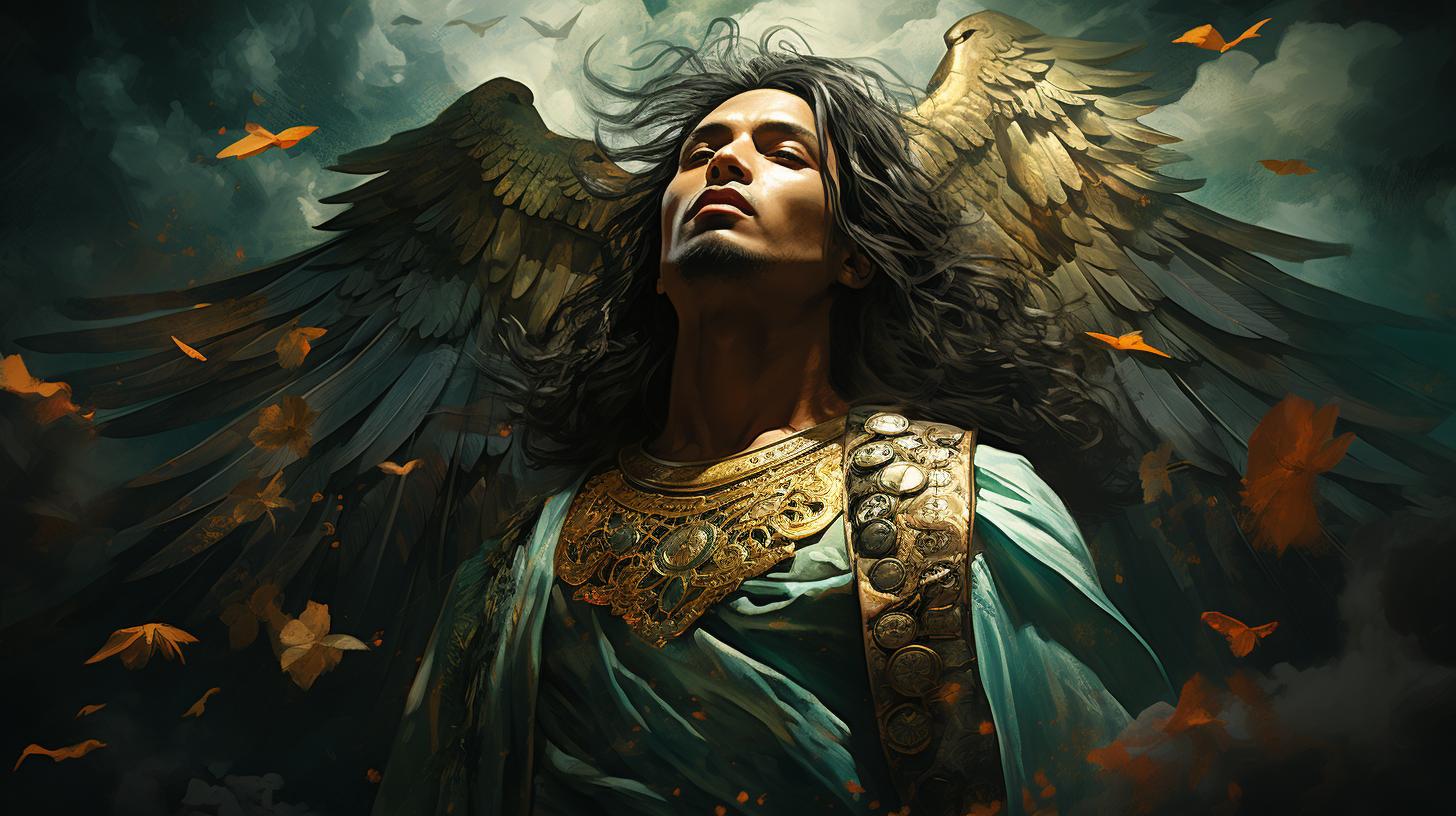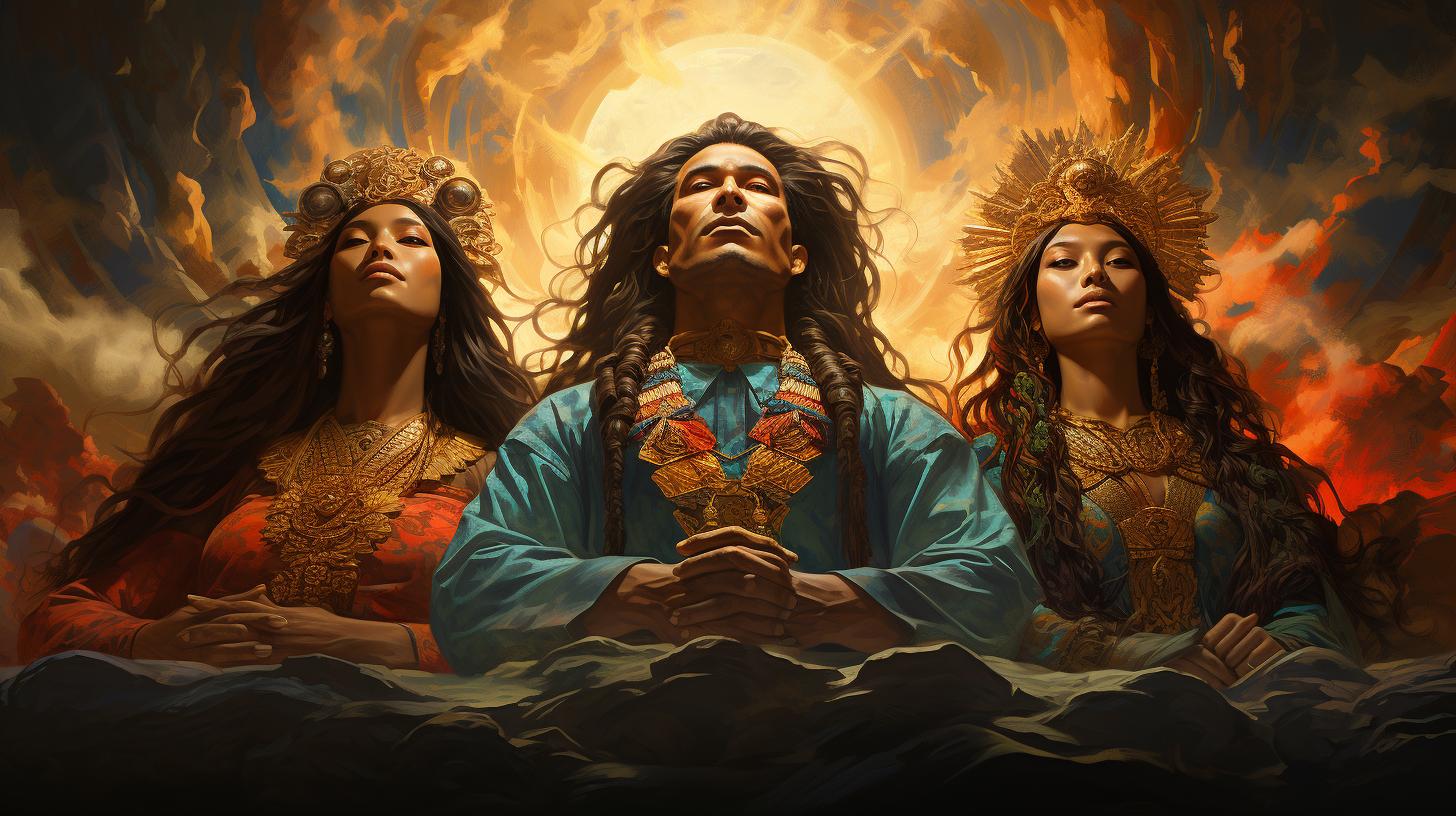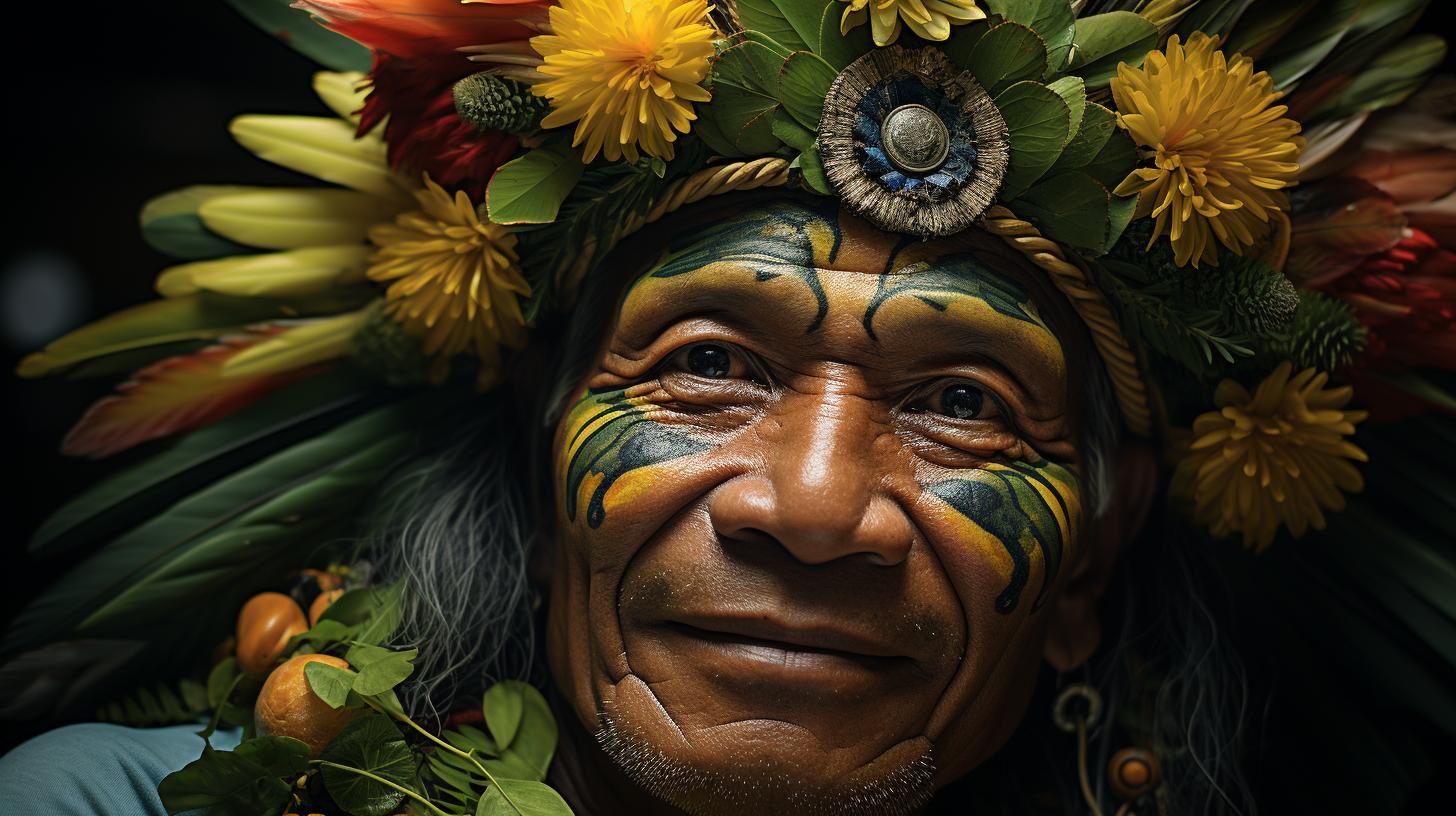Diyan Masalanta: Exploring the Philippine Mythology Deity of Love and Peace
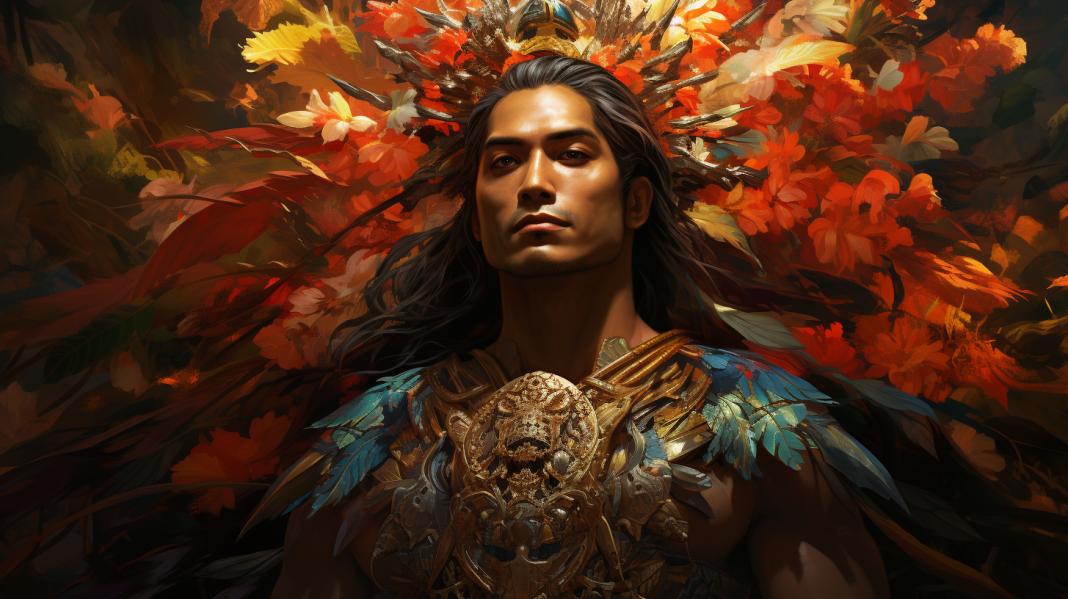
Diyan Masalanta, a deity in Philippine mythology, represents the essence of love and peace. Descending from the third generation of gods, she is the youngest daughter of Dumakulem, guardian of the mountains, and Anagolay, the goddess of lost things.
Diyan Masalanta is revered for her ability to calm storms, floods, and earthquakes, and some believe she could be an ancient incarnation of María Makiling, the diwata of Mount Makiling. The connection between Diyan Masalanta and the Catholic saint Santa Clara is also mentioned, suggesting a possible association between them.
Efforts to preserve Filipino indigenous culture and honor Diyan Masalanta through storytelling, rituals, and artistic representation in literature and music are highlighted.
Diyan Masalanta: Exploring the Mythical Deity of Love
Diyan Masalanta is a fascinating figure in Philippine mythology that embodies the essence of love and its profound impact on our lives. As we delve into the origins of Diyan Masalanta, we uncover a rich tapestry of stories, beliefs, and cultural significance associated with this mythical deity.
The Origins of Diyan Masalanta
The origins of Diyan Masalanta trace back to the ancient Filipino pantheon, where she is revered as the goddess of love and affection. She is believed to be the daughter of Dumakulem, the guardian of mountains, and Anagolay, the goddess of lost things.
This lineage adds layers of meaning to her role and attributes, as she embodies the qualities of strength, protection, and compassion.
Diyan Masalanta in Philippine Mythology
Within Philippine mythology, Diyan Masalanta holds a special place as the youngest of all the gods, belonging to the third generation. She is the sister of Apolaki, the god of war, signifying the delicate balance between the forces of love and conflict.
Diyan Masalanta’s presence is often associated with serenity and harmony, as she holds the power to stop storms, floods, and earthquakes through prayer and reverence.
Through her association with Maria Makiling, the diwata of Mount Makiling, Diyan Masalanta’s influence expands to include the realm of nature and its interconnectedness with human emotions.
This connection symbolizes the intimate relationship between the spiritual and natural worlds, as Diyan Masalanta guides and protects those who offer their devotion.
In summary,
Diyan Masalanta represents more than just a mythical figure in Philippine culture. She embodies the universal concept of love, forging connections between individuals, nature, and the divine. As we explore the depths of her origins and her place in Philippine mythology, we discover a profound reverence for the power of love and its ability to bring peace and harmony to our lives.
Connecting Diyan Masalanta with Philippine Culture and Beliefs
The mythical deity Diyan Masalanta holds a significant place in Philippine society, with her influence extending beyond the realm of mythology. She is revered and celebrated as a symbol of love, peace, and harmony.
Diyan Masalanta’s presence can be felt in various aspects of Filipino culture, including literature, art, and traditional practices.
Diyan Masalanta’s Influence in Philippine Society
Diyan Masalanta’s influence can be seen in the values and beliefs of the Filipino people. She embodies the ideals of compassion, kindness, and nurturing relationships. Her presence in the collective consciousness of the Filipinos serves as a reminder of the importance of love and understanding in building a harmonious society.
Filipinos often seek Diyan Masalanta’s guidance and blessings in matters of the heart and relationships. She is believed to bring guidance and wisdom to those who invoke her, helping individuals navigate the complexities of love and maintain harmonious connections with others.
Rituals and Worship Dedicated to Diyan Masalanta
Devotion and reverence towards Diyan Masalanta are expressed through various rituals and practices. Among these is the offering of flowers, particularly jasmine and roses, which are considered sacred to her. These floral offerings symbolize love, purity, and devotion.
In some regions, devotees organize gatherings and festivals to honor Diyan Masalanta. These celebrations involve music, dance, and storytelling, showcasing the rich cultural heritage associated with the deity. The rituals performed during these festivals reflect the deep-rooted belief in Diyan Masalanta’s power to bless relationships and bring harmony into people’s lives.
Additionally, prayers and chants are offered to Diyan Masalanta, seeking her intercession in matters of love, marriage, and family. These rituals serve as a way for individuals to establish a spiritual connection with the mythical deity, expressing gratitude and seeking guidance in matters of the heart.
Through these rituals and practices, Filipinos keep the spirit of Diyan Masalanta alive, honoring her role as the deity of love and peace in Philippine mythology.
The Symbolism and Significance of Diyan Masalanta
In Philippine mythology, Diyan Masalanta holds deep symbolism and significance, representing various aspects of life and human experiences.
This section explores the role of Diyan Masalanta in love, relationships, peace, and harmony.
Diyan Masalanta’s Role in Love and Relationships
Diyan Masalanta is revered as the deity of love, embodying qualities of compassion, empathy, and emotional connection. She guides individuals in matters of the heart, promoting harmonious and fulfilling relationships.
Devotees seek her guidance to navigate the complexities of love, seeking advice on matters of the heart, including attracting and nurturing healthy relationships, fostering understanding and communication, and finding harmony within partnerships.
Diyan Masalanta’s Contributions to Peace and Harmony
As the goddess of peace, Diyan Masalanta plays a crucial role in fostering harmony and tranquility among individuals and communities. Her energy inspires people to embrace empathy, understand different perspectives, and resolve conflicts peacefully.
Devotees pray to Diyan Masalanta to bring about peace and calm during times of turmoil or unrest. Her influence encourages unity, collaboration, and a collective effort towards building a harmonious society.
Through her symbolism, Diyan Masalanta reminds us of the importance of nurturing love, fostering healthy relationships, and striving for peace and harmony in our lives and communities.
Comparing Diyan Masalanta with Other Mythical Figures
Diyan Masalanta and Santa Clara: A Comparative Analysis
Diyan Masalanta, the mythical deity of love and peace in Philippine mythology, shares interesting similarities with Santa Clara, a Catholic saint.
Both figures are associated with feminine qualities and have connections to themes of love and protection.
While Diyan Masalanta is worshipped for her ability to calm storms, floods, and earthquakes, Santa Clara is known for her patronage of good weather and relief from drought.
These parallel abilities highlight the belief in a divine force that can control natural elements for the benefit of humanity.
Additionally, both Diyan Masalanta and Santa Clara are revered as embodiments of purity and grace.
Diyan Masalanta symbolizes the nurturing aspects of love and the joy of childbirth, while Santa Clara represents purity and virginity.
However, it is important to note that while there are similarities, Diyan Masalanta and Santa Clara belong to distinct cultural traditions.
Diyan Masalanta is deeply rooted in Philippine mythology, reflecting the indigenous belief system, while Santa Clara is a figure within Catholicism. The comparative analysis allows for a fascinating exploration of the intersection of different mythologies and religious practices.
Exploring Connections between Diyan Masalanta and Maria Makiling
Another intriguing comparison can be made between Diyan Masalanta and Maria Makiling, the diwata or nature spirit associated with Mount Makiling in the Philippines. Both figures embody aspects of femininity and are connected to elements of nature.
Diyan Masalanta, as the goddess of love and peace, complements Maria Makiling’s role as the guardian of the mountain and protector of its biodiversity. The harmony and cooperation represented by Diyan Masalanta resonate with Maria Makiling’s dedication to the preservation of the natural world.
Furthermore, it is believed that Diyan Masalanta is an earlier incarnation of Maria Makiling, reinforcing the connections between these two powerful female figures. This connection suggests a shared lineage and an interconnectedness between different realms of the mythical and natural worlds.
The exploration of these connections deepens our understanding of the rich tapestry of Philippine mythology and the diverse deities within it.
Preserving Diyan Masalanta’s Legacy: Efforts and Initiatives
Organizations Dedicated to the Preservation of Philippine Mythology
In order to ensure the preservation of Philippine mythology, various organizations have been established to document, study, and promote the legacy of Diyan Masalanta and other mythical deities. These organizations actively engage in research, collection of oral traditions, and archiving of ancient texts to provide accurate and comprehensive information about Diyan Masalanta’s significance in Filipino culture.
One such organization is the Philippine Mythology Research Society (PMRS), which focuses on the preservation and dissemination of indigenous knowledge related to Philippine mythology. They actively collaborate with scholars, indigenous communities, and cultural institutions to conduct research, organize seminars and workshops, and publish academic works dedicated to Diyan Masalanta and other deities.
Another key organization is the Diyan Masalanta Foundation, dedicated specifically to the preservation of Diyan Masalanta’s legacy. The foundation aims to raise awareness about the deity through educational initiatives, cultural events, and community outreach programs.
They organize festivals, exhibitions, and storytelling sessions to highlight the importance of Diyan Masalanta in Filipino folklore and foster a sense of pride and connection to indigenous beliefs.
Cultural Significance and Representation of Diyan Masalanta in Art and Literature
Diyan Masalanta’s influence extends beyond mythology and into various forms of artistic expression.
Many Filipino artists, writers, and musicians draw inspiration from Diyan Masalanta’s mythology to create artwork that celebrates and preserves her legacy.
In literature, Diyan Masalanta is often depicted as a powerful figure embodying love, peace, and femininity.
Her stories and symbolism are frequently featured in Philippine folklore and contemporary fictional works, allowing her image and teachings to reach a wider audience.
In the visual arts, paintings, sculptures, and illustrations that depict Diyan Masalanta can be found, capturing her grace, beauty, and connection to nature.
These artworks not only serve as visual representations of the deity but also contribute to the ongoing exploration and appreciation of Philippine mythology.
Furthermore, music and dance performances inspired by Diyan Masalanta’s stories and spirit showcase the cultural significance of the deity.
Traditional instruments and melodies are often incorporated, creating a unique and immersive experience that deepens the understanding of Diyan Masalanta’s role in Philippine culture.
- The Philippine Mythology Research Society (PMRS) actively collaborates with scholars, indigenous communities, and cultural institutions to conduct research, organize seminars and workshops, and publish academic works dedicated to Diyan Masalanta and other deities.
- The Diyan Masalanta Foundation raises awareness about the deity through educational initiatives, cultural events, and community outreach programs, including festivals, exhibitions, and storytelling sessions.
- Diyan Masalanta’s mythology inspires literature, with her stories and symbolism being featured in both Philippine folklore and contemporary fictional works.
- In the visual arts, various forms of artwork, such as paintings, sculptures, and illustrations, depict Diyan Masalanta, capturing her grace, beauty, and connection to nature.
- Music and dance performances inspired by Diyan Masalanta’s stories and spirit showcase her cultural significance, incorporating traditional instruments and melodies.
.











